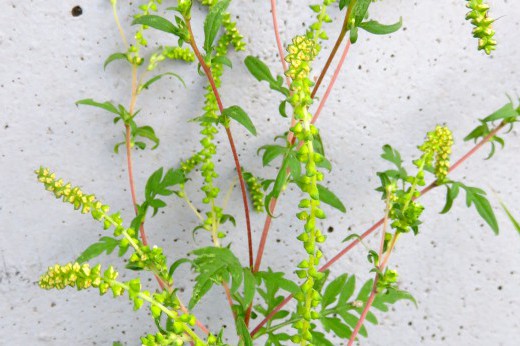A recent trip to Brooklyn’s Floyd Bennett Field left me in absolute awe of our most loathed native species: poison ivy. This weedy plant thrives spectacularly in disturbed landscapes, and anyone who wants a crash course in poison ivy identification should head there or to other wild, natural areas on the edges of the city.
Poison ivy (Toxicodendron radicans) can be tricky to identify since it exhibits an array of colors, leaf shapes, and growth habits. But start with the adage “leaves of three, let it be.” Poison ivy has three leaflets: The center leaflet is symmetrical along the midvein, but the two side leaflets are often asymmetrical. The leaves can range from dull to glossy, lime to hunter green, with new growth showing a reddish tinge. The leaf margins (edges) may be smooth or jagged, and oftentimes the two side leaflets each have a matching “hook.”
The plant might creep as a low groundcover, spread as a shrubby plant, or climb as a woody vine. I looked up while walking on a trail in Jamaica Bay recently to see if I could identify the lovely tree that was filtering the sunlight and was shocked to realize I was standing under a large poison ivy vine, hitching a ride on a black cherry branch. Common lookalikes include fragrant sumac, blackberry and raspberry brambles, and Virginia creeper. But there are telltale differences. Fragrant sumac has red berries, poison ivy has white; blackberries and raspberries have prickles, poison ivy does not; and Virginia creeper has five leaflets, not three.
What is it about poison ivy that makes most of us itch? An oily compound called urushiol, present on all parts of the plant, even the bare stems in winter. In fall, the foliage is a stunning fiery red or sunset orange, but once the leaves drop, poison ivy is hard to discern. I learned this the hard way on a November hike in the Palisades, when I stepped off the path to pee in a spot covered in dead-looking twigs. The next morning, I had three itchy, angry-looking bumps on my upper thigh. To be honest, when it developed into poison ivy’s characteristic blistery rash, I was actually relieved that it wasn't bed bugs! A true New York tale.
A lucky 10 to 15 percent of the population are immune to the plant, but if you’re one of the lucky few, be warned: The more you are exposed to poison ivy, the more you increase your susceptibility to a reaction. And unfortunately, poison ivy is also doing super well because of climate change. Scientists have found that as carbon dioxide levels in the air increase, poison ivy produces larger, more vigorous leaves, with higher levels of urushiol. Since the 1960s, its growth and potency have doubled!
Scientists speculate that poison ivy produces urushiol as an antimicrobial defense. Animals brushing against the plant are not affected, but if humans pet their furry friends, the oils can be transferred and cause a rash. Birds, too, are unaffected—they eat the berries in the fall and may use the vines for nest construction. Next time you go exploring in Jamaica Bay or any other location on the edge of the city, be sure to leave your puppy at home—and give your clothes and skin a soapy wash afterward!




